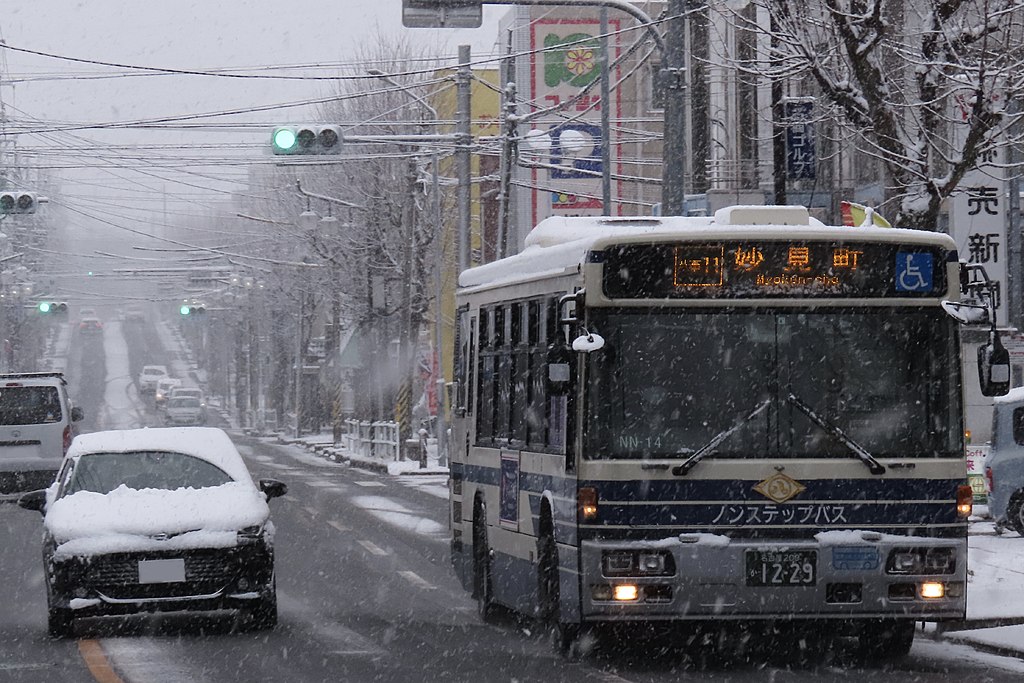Winter in Japan is a season of contrasts and diverse experiences, from snow-blanketed landscapes in the north to milder but chilly climates in places like Nagoya and Aichi. Travelers can revel in tranquil, snow-covered landscapes, soak in natural hot springs (onsen), and indulge in seasonal delights like hot pot (nabe) and warm sake. However, even in regions not known for heavy snowfall, staying warm is essential, and precautions are needed to prevent frozen pipes. This guide provides insights into Nagoya’s winter climate, staying warm, and safeguarding your home.
Winter in Nagoya and Aichi
In Nagoya and Aichi, winter brings relatively mild conditions from December to February, with temperatures ranging from 1°C to 12°C (34°F to 54°F). While snow is possible, it’s usually a light dusting that melts quickly, and rainfall is sporadic. Clear skies prevail, making it suitable for outdoor activities and sightseeing.
Average Temperatures in Nagoya Over the Year (Celsius)
| Month | Jan | Feb | Mar | Apr | May | Jun | Jul | Aug | Sep | Oct | Nov | Dec |
|---|---|---|---|---|---|---|---|---|---|---|---|---|
| Average High (°C) | 9 | 10 | 13 | 18 | 23 | 27 | 31 | 31 | 27 | 21 | 16 | 11 |
| Average Low (°C) | 0 | 1 | 4 | 9 | 14 | 19 | 24 | 25 | 20 | 14 | 8 | 3 |
Average Temperatures in Nagoya Over the Year (Fahrenheit)
| Month | Jan | Feb | Mar | Apr | May | Jun | Jul | Aug | Sep | Oct | Nov | Dec |
|---|---|---|---|---|---|---|---|---|---|---|---|---|
| Average High (°F) | 48 | 50 | 55 | 64 | 73 | 81 | 88 | 88 | 81 | 70 | 61 | 52 |
| Average Low (°F) | 32 | 34 | 39 | 48 | 57 | 66 | 75 | 77 | 68 | 57 | 46 | 37 |
Note: The above temperatures are approximate averages and may vary from year to year. Please check current weather forecasts for the most up-to-date information.
Winter Clothing Recommendations
To stay comfortable during Nagoya’s winter, consider these clothing recommendations:
- Layering: Begin with thermal or woolen undergarments, add sweaters or fleeces, and top it off with an insulated jacket.
- Waterproof Outerwear: While heavy snowfall is rare, a waterproof or water-resistant outer layer is wise for rain or light snow.
- Cold-Weather Accessories: Pack warm hats, gloves, scarves, and thermal socks.
- Warm Footwear: Opt for insulated and waterproof boots for outdoor exploration.
- Umbrella: Carry a compact travel umbrella for occasional rainfall.
- Indoor Shoes: Be prepared for indoor customs by packing cozy slippers or socks.
- Adaptability: Dress in layers to adjust to temperature fluctuations throughout the day.
Staying Warm
To combat the cold in Nagoya and Aichi, consider these strategies:
Kairo Pocket Warmers: Find gel-based pocket warmers in convenience stores and pharmacies for on-the-go warmth.
Onsen (Natural Hot Springs): Enjoy the soothing experience of onsen, available throughout Japan, offering both public and private options.
Yutanpo (Hot Water Bottles): Use hot water bottles to stay warm in bed, providing localized comfort.
Kotatsu: Embrace the genius of the kotatsu, a low table with a built-in heater, ideal for cozy relaxation at home.
Hizakake Blankets: Keep warm in drafty buildings with portable hizakake blankets, placing them on your lap.
Vending Machine Hot Drinks: Seek vending machines selling hot beverages marked in red for quick warmth.
Heating your Home
- Air Conditioners (Aircon): Wall-mounted aircon units in Japan often include a heating function (暖房, danbou). The cost of using this function can range from ¥2.8 to ¥53.5 per hour, depending on settings and efficiency.
- Halogen Heaters: These heaters use halogen elements and are relatively affordable, with prices starting from ¥3,000 to ¥4,000. The hourly operating costs range from ¥10.8 to ¥32.4, depending on the wattage setting.
- Fan Heaters: Fan heaters, including ceramic fan heaters, use a fan to circulate heated air. A 1,200W fan heater costs about ¥32.4 per hour to run.
- Ceramic Heaters: These heaters use ceramic plates to generate and distribute heat. They are different from fan heaters, which use heating coils.
- Carbon Heaters: Carbon heaters are known for their low surface temperature, even heat distribution, and large heating surface area.
- Kerosene Heaters: Common in rural areas, these heaters are cost-effective but require proper ventilation due to toxic fumes. The cost per hour ranges from ¥13.5 to ¥32.4, depending on the setting.
- Electric Carpets: These are energy-efficient, with a two-tatami-mat-sized electric carpet costing about ¥9 per hour on a high setting. Prices for these carpets start from ¥3,000 to ¥4,000.
- Kotatsu: A traditional Japanese heating method, kotatsu are highly energy-efficient, costing about ¥4.6 per hour on a 510W setting and ¥2.2 on a low setting.
Preventing Frozen Pipes
While Nagoya isn’t in snow country, precautions are needed to prevent frozen pipes:
- Drain Water Supply: Before winter, drain unused water supply or water heaters to avoid freezing and damage.
- Insulate Pipes: Protect exposed water pipes with heat-insulating material and wrap them with vinyl tape to keep them dry.
Nagoya and Aichi offer a milder Japanese winter experience, but preparation is essential. With insights on staying warm and safeguarding your home against frozen pipes, you’ll make the most of your winter visit to this vibrant region. Enjoy your time in Nagoya while staying comfortable!
東海民, CC BY-SA 4.0, via Wikimedia Commons
